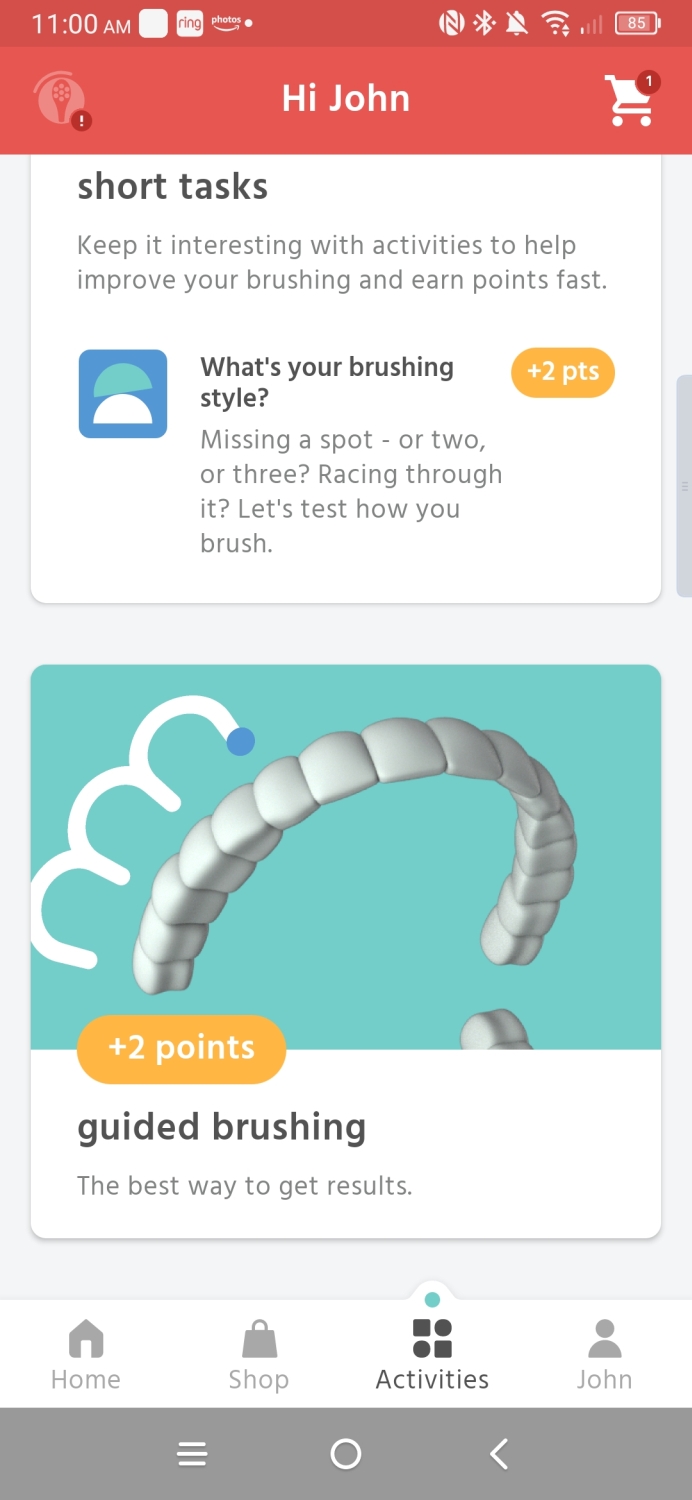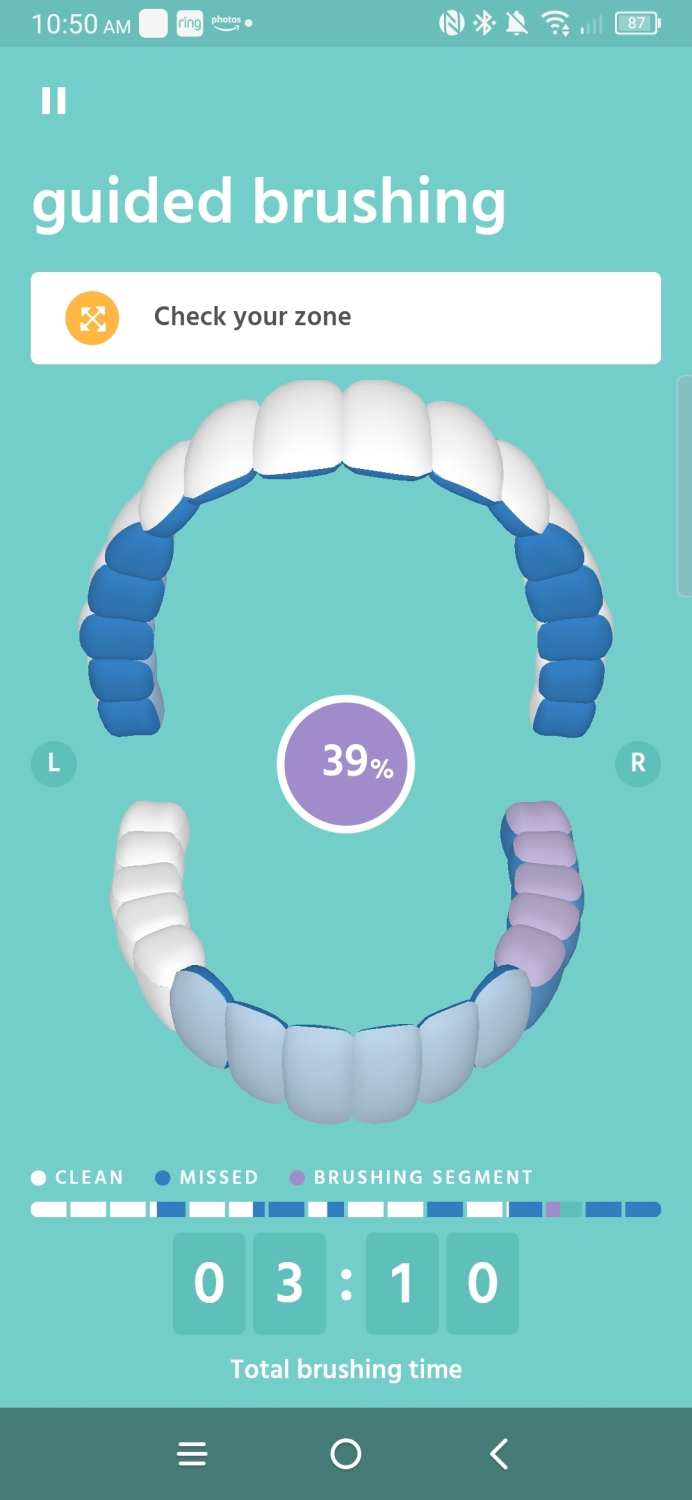“Too lazy to brush? Colgate Hum awards points every time you use it, to get you off the couch.”
- Earning reward points for brushing
- App guides you to effectively brush
- So-so cleaning performance
- Can be tricked into brushing teeth
- Limited selection with online shop
Smart toothbrushes aren’t new. They’ve been around for years now, gathering data and providing us with useful information to better our brushing skills. The question is whether or not any of the new technologies or advancements are making a practical difference. Sure, it’s wonderful that there are gyroscopes, accelerometers, and pressure sensors crammed into some of them, but at the end of the day, they’re all meaningless if they can’t change habits.
That’s where Hum by Colgate is different: It’s redirecting the conversation to focus on changing our habits around brushing — through the help of incentives. It’s probably the smartest thing to happen to the smart toothbrush.
The charm to delight
Colgate’s smart toothbrush has a certain charm to it. That’s because it’s not trying to be a souped up, techie looking toothbrush. There’s no imposing stature to it. Instead, Colgate’s approach is more subdued, often reminding me of a painter’s brush more than anything else because of the pastel colors. Available in two variants, rechargeable or battery-powered, you get to choose from three colors — blue in my case.

Charming design aside, there’s not much to set it apart from other toothbrushes. Although, it’s lightweight and hollow, it’s ergonomically designed to feel comfortable while brushing. It comes with a carrying case and charging base, too. I don’t know why, but I was compelled to see if the Hum by Colgate would charge using one of my smartphone wireless charging pads. And sure enough, it did!
Superficial clean, tough in between
Now, before I get into the smart features with the Hum by Colgate, I want to detail its cleaning performance, which I favor above all. Colgate’s brush head is similar to others that vibrate, like Philips’ Sonicare line of electric toothbrushes, to break up plaque and debris. The brush itself combines rigid brushes along with softer, almost plastic-like ones.
The overall brushing performance is average I’d say. The vibration isn’t as powerful as I’d like, but it still managed to do an okay job of superficially cleaning. However, it’s not effective at removing stuck pieces of food in between teeth, so flossing is still necessary. I do appreciate that it comes with a tongue cleaner, which is something you don’t find often.

You can brush your teeth one of two ways: On your own or being guided with the mobile app. With the former, there are vibrations that indicate when it’s time to move on to another area of your mouth — while the latter showed me visually how long and where I should be brushing. I prefer the app experience, because it ensures that I’m properly covering all areas of my mouth. But then again, it’s nice that the toothbrush will store data of my brushes for up to 10 days — so you’re not locked into bringing your smartphone each and every time you brush.
Incentivizing the brushing experience
As a smart toothbrush, the Hum by Colgate doesn’t exceed any of my existing expectations. It’s able to sense where I’m brushing and if I’m brushing fast enough, which is what you’ll find in any other smart toothbrush on the market. Where it distinguishes itself from the pack are the incentives that Colgate provides for you to brush your teeth, and in a way, it’s a brilliant idea.
Whenever you brush, you earn “smile” points — one point each time you brush, regardless of how long or how well you do it. Reaching 100 points equates to a $1 credit, which can be used to buy replacement heads ($10 for a two-pack) or a new toothbrush. It’s worth noting that there’s a hard cap of three eligible brushing sessions per day, so you can’t do something outrageous like brush 100 times in a single day.
Currently, the shop has a fairly limited selection, so I hope it’s expanded to include more things. Perhaps toothpaste or floss? And while it may seem like it’d take forever to accumulate enough points to get a substantial discount, the app offers “activities” that you can do as another way to earn more points.
I was able to fool the Hum by Colgate by pretending to brush my teeth.
This, without question, is the smartest thing to happen to the smart toothbrush in a while. Strangely enough, I was able to fool the Hum by Colgate by pretending to brush my teeth. In fact, I don’t think it can actually sense if it’s in my mouth or not — so it relies on movement more than anything. It’s not a bad thing per se, especially considering there’s a hard cap to how many points you can earn in a single day.
Our take
Functionally, the $70 Hum by Colgate is no different from other smart toothbrushes on the market. What’s special here is how Colgate incentivizes the brushing experience by earning points for discounts on actual products. It’s a smart move and a good motivational tool to get you to brush more often.
How long will it last?
The all-plastic construction makes it feel lightweight and hollow, but I have confidence that it’ll hold up well over time. There’s a two-year limited warranty that covers defects.
From my experience, battery drain is about 3% to 4% with each three-minute session. It’s not terrible, but you’ll at least get a handful of brushes before needing a recharge.
Is there a better alternative?
When it comes to cleaning and features, there are others that do a better job. Philips’ Sonicare and Oral-B’s iO series have impeccable cleaning abilities, so if that’s most important to you, they’re the better recommendations.
Should you buy it?
If you have a tight budget and can overlook its so-so cleaning performance, then definitely consider buying it, especially when there’s an incentive being thrown in to brush your teeth.







